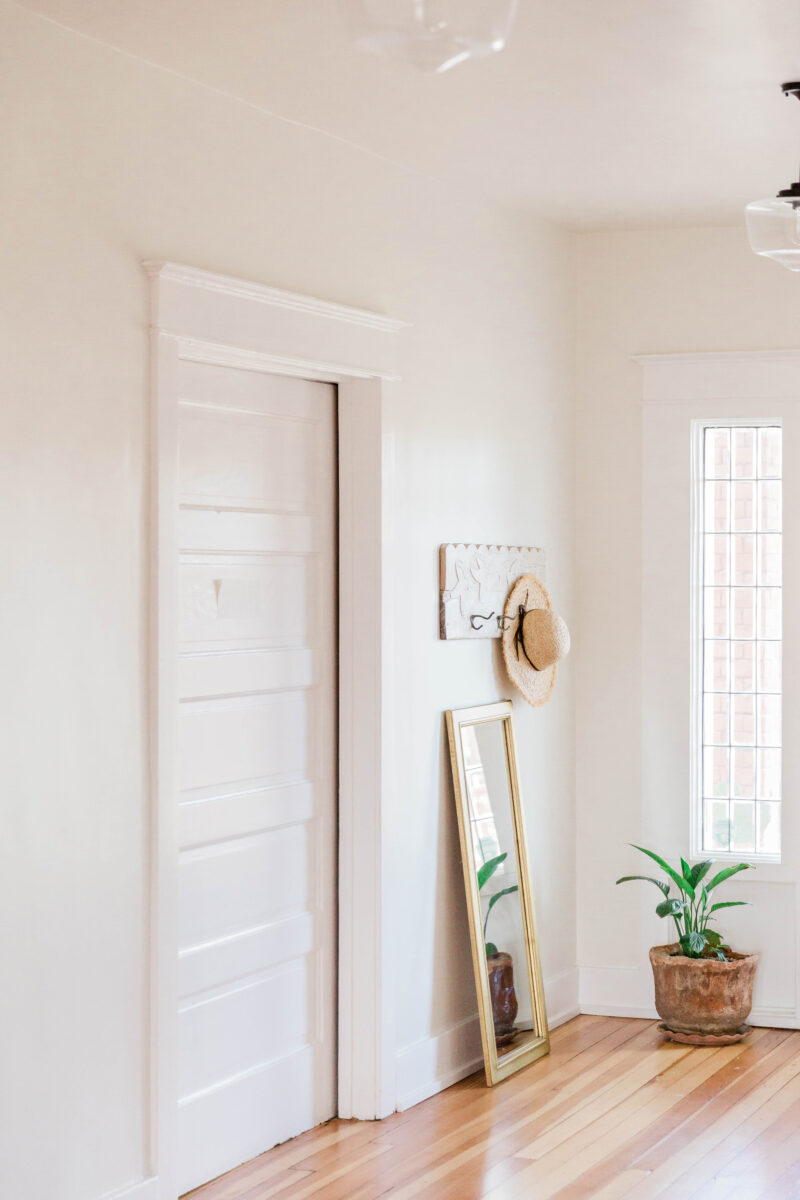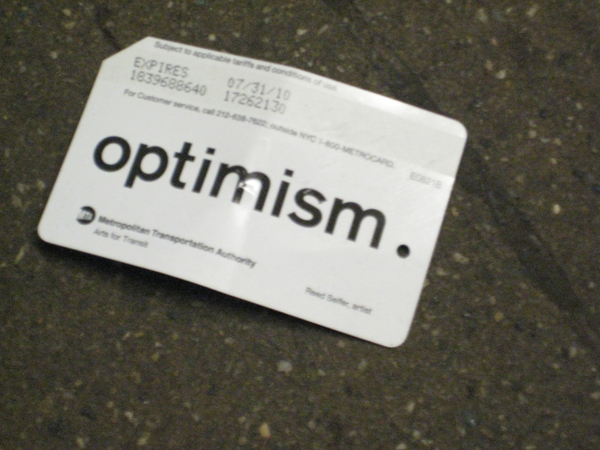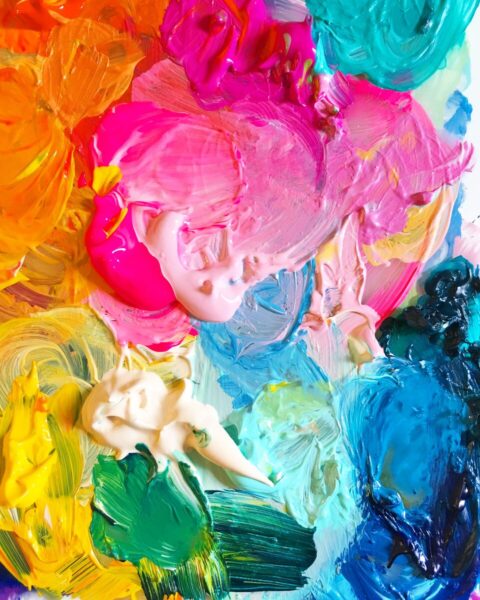How to cleanse your home of negative emotions

Author’s Note: This post was originally published on December 28, 2020. It has been updated and reshared.
Thinking about a home refresh? Good timing! Sign ups just opened for our free LIVE home workshop, the 5 Secrets to Designing a Feelgood Home. We only do this once a year, so make sure to RSVP before spots fill up!
When you think of cleansing the energy in your home, what comes to mind? Maybe a handful of healing crystals and palo santo, or a singing bowl with a side of orange essential oil. That’s not exactly what I mean here (though if that works for you, go for it!)
What I’m talking about are the physical ways that our emotional baggage gets stored in our homes, often hiding in plain sight. Clearing it out of our space can feel like a breath of fresh air helping us to feel more positive energy and ease at home.
Here’s a small example: next to my bed I used to have a little bit of guilt. It came in the form of a notebook I purchased to capture Graham’s first months. I had grand plans of logging every “first” as a way to capture those moments which slip by so quickly. But amidst getting my bearings as a pandemic parent, it sat unopened for months. Something that started out joyful turned into a source of guilt that I had to confront every morning and night. Simply moving it out of my eyeline (and to the notes app on my phone) helped remove negative energy that creeped in every time I saw it staring at me.
How to Cleanse Your Home of Negative Emotions
Guilt, shame, anxiety, regret: these emotions can take up residence in our homes without us realizing. And while all emotions have a purpose, dwelling on (or with) them when we’re not actively processing them can weigh us down. This is because when triggers for difficult emotions are present in our space, it’s impossible to escape their influence. Even if we just glance at something once a day, we’re confronted with that emotion 30 times a month! We’re not acting on it or learning from it. It’s just sapping our energy and our joy.
With this in mind, I thought I’d zoom in on some of the most common negative emotions that hide out in our homes, and share some ways to spot them so you can clear them out. (It’s not quite as easy as recharging your rose quartz, but here’s hoping this helps you feel a sense of freedom.)
Read on for ways to root out the bad energy lurking in the corners of each room of your home in the form of six energy-sapping emotions. (No black tourmaline or essential oils required…)
Guilt
Guilt arises out of things that we feel we should do, but haven’t done for one reason or another. For example, I have a tendency to leave things out to remind myself to do them. I’ll leave a thank you note on my desk, only to be confronted by it every time I sit down. This distracts me from what I’ve come to my desk to do, and it turns the task into an obligation.
Guilt can also come from self-betrayal: when you violate your commitments to yourself. If you invested in workout gear because you made a resolution to get in shape but struggled to keep up with it (or just didn’t feel like it!), looking at it every day might be killing your joy. Maybe you need to find a different way to move your body that is more enjoyable to you. Or maybe it’s time to take a break and tuck your gear away until you’re ready to recommit to it.
Where to look for guilt in your home:
- Unfinished projects
- Items related to hobbies or habits you haven’t made time for
- Things you bought but never used
- The pile of books to read that you’ve lost interest in
- Gifts you feel like you should keep, but don’t actually like
Regret
Noticing regret in our homes reminds us to live in the present. If we look around and see remnants of relationships that didn’t work out, or other disappointments, it can yank us backward and make it hard to move on.
A major source of regret is spending. If you’ve spent money on something you don’t use, or you’ve overspent, the item can feel like a reminder of lack of self-control or foolishness. Selling it to recoup some value might be one option. It’s also worth acknowledging sunk costs: living with something you hate won’t put the money back in your bank account. If you can afford to, let it go, and keep the lesson for next time.
Where to look for regret in your home:
- Objects that remind you of relationships that didn’t work out
- Things you overspent on, but no longer love
- Things that remind you of choices or hurts that you’re struggling to leave behind
Shame
Shame lurks in the vulnerable places in our homes, the places where we hold the tender heart of our identity. Anywhere where our true selves rub up against the judgments of others, be they family or society, can be a place where shame might creep in. The closet, the bathroom, or the kitchen — places related to the body — are especially prone to being sources of shame.
Shame is one of the most insidious emotions that hides in our homes because it can often masquerade as joy.
The tray of skincare products in your bathroom: are these a joyful form of self-care or an attempt to erase wrinkles that we’ve been led to believe make us less beautiful or worthy? The diet cookbook on your kitchen counter: is it a tool for living a healthier life or a tool for trying to fit into a body deemed more socially acceptable? The reality is that often a thing is both. But if your encounters with it consistently make you feel “less than,” ask yourself if it might feel freeing to get it out of your space — and your life.
Ditto the opera albums, the heady documentaries, the pile of New Yorker magazines, and the chunky non-fiction reads: if you love these things, wonderful! But if you’d rather read a romance novel than a biography, or listen to the latest top 40 hits on repeat rather than an aria, then clearing out the things you’re supposed to like can help you ditch the shame and create more space for joy.
Where to look for shame in your home:
- “Skinny clothes” — the ones you haven’t fit into a long time but haven’t been able to let go of
- Clothes you don’t like but feel you need to wear to look “presentable” to others
- Skincare products or cosmetics you bought to resolve a supposed defect
- Dieting or exercise paraphernalia that you don’t actually enjoy using
- Mirrors (e.g. magnifying mirrors) and scales
- Books, music, or other media that you feel you should like but don’t actually enjoy
Overwhelm
If you look around your home and feel overwhelmed, it may be because you have a lot of things in your home that are demanding your attention. My friend, the life coach Anese Cavanaugh, calls these things tolerations — things you tolerate, but sap your energy in the process. A broken chair, a blown out lightbulb, a picture that needs to get framed, a sweater with a missing button: each of these is a reminder of an action you need to take. When you have lots of these kinds of things, your home effectively becomes a giant To Do list that you’re living inside, making it impossible to relax.
Overwhelm can also come from broken systems. When your pantry is overflowing, your entryway is a mess, or your bookshelves are busting at the seams, these are signs that your organizational systems aren’t keeping pace with your life. Maybe as your kids get bigger, you need a way to help them keep track of their coats and shoes. Maybe you’re cooking more and need a better way to keep spices accessible. Tweaking these systems can help you feel like you have a smooth foundation that helps daily life flow.
Where to look for overwhelm in your home:
- Piles that need to be sorted
- Broken things
- Things in need of maintenance (wood that needs to be oiled, batteries that need to be replaced)
- Places where you repeatedly notice a sense of frustration or friction
- Organizational systems that aren’t working well
Anxiety
Anything that makes you feel on your guard can aggravate anxiety, whether that’s having a home that’s so formal you feel like you can’t relax, or having a space full of sharp-edged furniture that you’re always bumping your shin on. I recently replaced my thin water glasses with thicker ones and was surprised to discover how much peace this created, now that I’m now longer worried about breaking them every time I take them out of the dishwasher.
As someone who suffers from anxiety, I’m particularly attentive to things in my surroundings that might stress me out. I even created a free guide, 7 Ways to Reduce Anxiety in Your Home, to share the ways I’ve learned to make my space feel more like a sanctuary, so check that out if you want to go deeper on this topic.
Where to look for anxiety in your home:
- Things that are uneven or wobbly
- Awkward things that don’t quite fit or feel uncomfortable to use (e.g. a chair that’s too tall for a table, so is always bumping into it)
- Things that jangle your senses with unpleasant noises or textures
- Sharp edges that you have to be careful around
- Fragile things you’re always worried about breaking
- Formal decor that you worry about messing up (e.g. a sofa you don’t let guests drink red wine near)
Stuck-ness
There’s a feeling that doesn’t exactly have a name, but is one that I know a lot of people are feeling right now. For lack of a better term, let’s call it stuck-ness. It’s essentially a feeling that life is on hold, that you’re not making the progress you’d like to in some part of your life. It often happens when we’re waiting for something in our lives to change, whether we’re ready to find a partner but are struggling to meet the right person, or feel like we’ve hit a plateau in our career.
Feeling stuck can sometimes make us reluctant to invest energy in our space, which results in spaces that are unfinished or undecorated. We hesitate to decorate the rental apartment, thinking instead we’ll wait until we buy a home. When I was struggling with infertility, I put off decorating my bedroom, telling myself that I didn’t want to go to all the trouble if we were just going to have to move when I got pregnant. The problem is that living in temporary conditions serves as a chronic reminder of our stuck-ness, and we never know how long the waiting will last. Three years of waking up in a bedroom with blank walls just amplified my sense of stasis, that it wasn’t just my dream of having a child but my whole life that was on hold.
When we commit to our present homes, we also commit to our present lives.
We can hold our future hopes more gently knowing that our entire happiness doesn’t depend on them. We can trust that joy will come in the future, while also creating space for it in the here and now.
Where to look for stuck-ness in your home:
- Spaces that are unfinished or undecorated
- Art propped up against the walls that hasn’t been framed or hung
- Things you have been saving for a future life that you might enjoy right now (e.g. fancy dishes, family heirlooms)
- Styles or objects that you feel you’ve outgrown
I hope this helps you clear out some of the emotional weight that’s been accumulating in your space and create more room for joy. Do you have any tips for cleansing negative energy from your home? I’d love to hear them!
Reminder: My free live home workshop is coming soon! Learn how to create a home you love without moving, renovating, or spending money you don’t have. Save your seat right here.





Discussion (22 Comments)
I’d love tips for bringing joy into a high school classroom that don’t cost a lot, don’t require a ton of effort, and don’t violate our ridiculously strict fire code (nothing hanging from the ceiling, nothing within 15 inches of the ceiling, nothing on the door, nothing plugged in that isn’t UL and won’t be approved by district electricians, etc.).
This post brought me to tears, thank you for writing it, Ingrid. I have felt my rental apartment for the last 7.5 has just been a very useful holding space for my things while I live out and about in NYC. It’s not a place I’ve felt the need to invest in or pour my heart into decorating. But since life has been on hold for so long, I’ve had to confront my apartment’s dingy walls, unhung art, crooked closet doors on a more intimate basis and have felt so awful about it, but unable to do anything about it. This has given me a lot to think about.
I would like to see and hear what you have to share about creating a joyful purpose for 2021.
Such a lovely post – inspiring and comforting at the same time. Thank you and Happy New Year.
This was such a beautiful post. Timely, yet timeless. Thank you for capturing what I imagine many of us feel.
Excellent piece. I could identify with several of those ‘angsts’.
Tips:
Xmas cards. Bogged down with what to write in them this year I sent some emails with a brief newsletter and was pleased to get replies from people I don’t see each year. My responses provoked further conversation.
Clutter. If it hadn’t been of use in 2020 you probably don’t need it.
Repairs (eg a table lamp that needed rewiring). I could have thrown it out but got immersed satisfaction from mending it, it still works and the money was used for a new (necessary) item.
Pictures (we’ve just sold a property and are renting these past months and cannot hang anything). I’ve started a Facebook page and put frames things on their to share the enjoyment.
New Year resolutions. Not making them for 2021…life is a bonus right now, be kind to yourself not hard on yourself
Best Wishes 🙂
Hi Ingrid, thank you for this post, One of the very few “New year themed” Texts I enjoyed recently. I wanted to share a tip for getting rid of guilt around keeping track of your Kids Highlights it’s the “One Line a Day Diary”. Have a great Start into the next year!
Hi, Ingrid!
I don’t always get to this space as often as I’d like, but when I do I’m always rewarded. This was SUCH a great read and so insightful–the perfect framework for entering a new year, especially one where we’ll still be home very often. Thank you for taking the time and for your consistent pursuit of OUR JOY.
Much love,
Sarah
Lots of great ideas! Since becoming a “Joyspotter” I’m so much more observant about the emotions that are conjured up from my decor or surroundings!
I retired 2 years ago with the hopes of traveling to warm places every winter. I live in Colorado and my home always seems drafty and cold in the winter. Last winter, I was in Sarasota, Florida with a friend when Covid hit and I felt so lucky to be able to ‘hunker down’ with my friend. This year, I’d like to find ways to bring more winter warmth to my home. I’m thinking cozy blankets, space heaters, and bright lights. Any other suggestions would be much appreciated!
I have learned that when things feel stuck and cannot be changed, I need to change the way I look at them. With ‘new eyes’ there are positives to be found, and suddenly the stuck feeling subsides. There is then power over the situation.
Each emotion highlighted in this post hit home and made me think. Thank you for writing about them. Happy new year and happy de-cluttering!
Thank you so much Ingrid. It’s always a pleasure to read your thoughts. I love the section on stuckness. The anticipation of joy for people who love to plan far, far ahead (that’s me) often robs the current moment of joy. It’s an important reminder for me to live here now, see the people around me, and share the gratitude of the day.
I loved the post, thanks for your words Ingrid. I do this ritual twice a year and I must confess that before reading this I felt kind of awkward because I don’t know anyone close to me who also does it, but for me it is a necessity. So it was nice to think more about it and find some very good tips.
This helped so much! I’ve already “let go” of a few ornaments that I have never liked while “putting away” Christmas decorations! 😉 Thank you.
I’d love to hear more about initiating joyful conversation in small, medium, and large group settings in 2021.
Thanks, Lisa! Do you have our Joyful Conversation Starters guide? Aestheticsofjoy.com/conversation-starters Just checking!?
I would love to hear you discuss the link between joy and creativity. Ie how making original pieces of art / craft brings joy and why that is. I would also love to hear how others have changed something onerous into something joyful eg by introducing play into a boring activity. I guess what I am saying is that it is lovely to be on the lookout for joy but I like the posts where others have intentionally and innovatively created more joy in their life. Active rather than passive joyspottong.
This hits so many chords! Thank you.
Such a helpful approach to CLEARING clutter! CLEAR is my theme this year, and so many of these emotionally charged issues resonate with me. Thank you for bringing so much more JOY into my life since discovering your book and delightful website!! Wishing you and your family – and your readers – a healthy, happy and JOYFUL New Year!! From a very grateful reader
I have several spaces in my home that have been emotionally difficult to organize. I find that taking photos of the space allow me to think about the room without being in it, and de-personalizes the experience a bit. The photo “flattens” the space into 2 dimensions, and I can see more clearly what belongs, what doesn’t, and where potential lies.
“When we commit to our present homes, we also commit to our present lives.” Wow! That’s such a powerful statement. Everything you wrote really resonates with me.
Thanks for this great article! One source of negative energy that came to my mind while looking around my house: plants that are on their way to slowly dying. For some reason, quite a few plants just decided to give up in our home and despite me trying to bring them back to life, they are just withering away… I hung on to them for quite a while now, hoping that they will become better after a while, but everytime I look at those plants, I feel so bad at not being able to care for them. I think it’s time to let these feelings (and the plants) go!